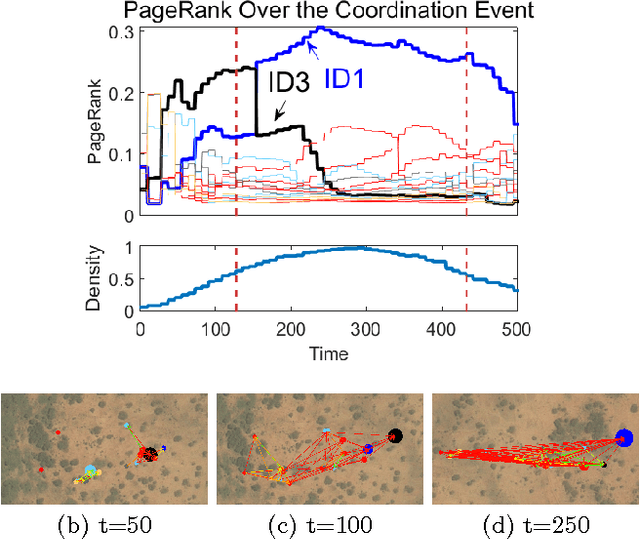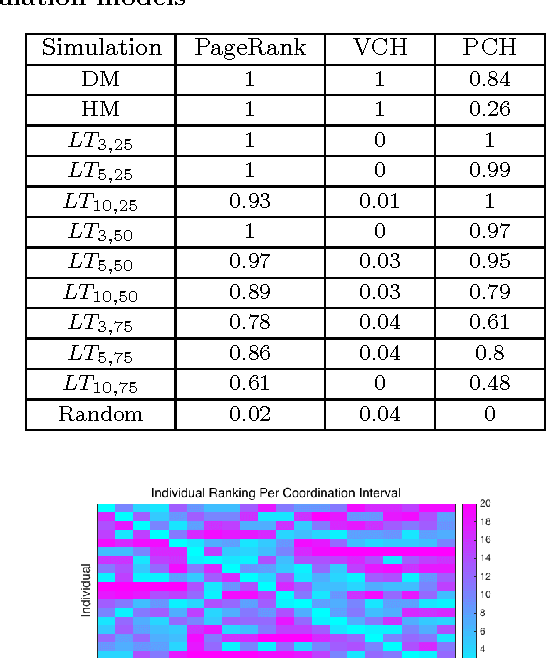Damien Farine
FLICA: A Framework for Leader Identification in Coordinated Activity
Mar 04, 2016



Abstract:Leadership is an important aspect of social organization that affects the processes of group formation, coordination, and decision-making in human societies, as well as in the social system of many other animal species. The ability to identify leaders based on their behavior and the subsequent reactions of others opens opportunities to explore how group decisions are made. Understanding who exerts influence provides key insights into the structure of social organizations. In this paper, we propose a simple yet powerful leadership inference framework extracting group coordination periods and determining leadership based on the activity of individuals within a group. We are able to not only identify a leader or leaders but also classify the type of leadership model that is consistent with observed patterns of group decision-making. The framework performs well in differentiating a variety of leadership models (e.g. dictatorship, linear hierarchy, or local influence). We propose five simple features that can be used to categorize characteristics of each leadership model, and thus make model classification possible. The proposed approach automatically (1) identifies periods of coordinated group activity, (2) determines the identities of leaders, and (3) classifies the likely mechanism by which the group coordination occurred. We demonstrate our framework on both simulated and real-world data: GPS tracks of a baboon troop and video-tracking of fish schools, as well as stock market closing price data of the NASDAQ index. The results of our leadership model are consistent with ground-truthed biological data and the framework finds many known events in financial data which are not otherwise reflected in the aggregate NASDAQ index. Our approach is easily generalizable to any coordinated activity data from interacting entities.
 Add to Chrome
Add to Chrome Add to Firefox
Add to Firefox Add to Edge
Add to Edge